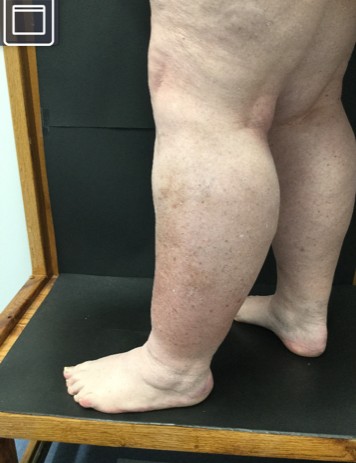May-Thurner syndrome is a relatively rare condition, and its symptoms can be nonspecific and easily confused with other conditions.
The symptoms of May-Thurner Syndrome can include: pain, swelling, and cramping in the legs, especially in the thigh and calf; a feeling of heaviness or fatigue in the legs; varicose veins; skin discoloration or ulcers on the legs; and blood clots in the legs (deep vein thrombosis). In some cases, the syndrome may not cause any symptoms. If symptoms do occur, they usually develop gradually over time. These symptoms are common of many other conditions which can make it difficult for healthcare providers to diagnose May-Thurner syndrome.
May-Thurner syndrome is a condition that occurs more commonly in women than in men. Studies have estimated that the condition occurs in about 1 in 200 women and 1 in 2,000 men. However, it is important to note that the exact incidence of May-Thurner syndrome is not known, and these estimates may vary depending on the population being studied. Additionally, the condition may be underdiagnosed, particularly in men. Another reason for misdiagnosis is that symptoms may be mistaken for other conditions that affect the same regions of the body, such as varicose veins, peripheral artery disease, or chronic venous insufficiency. Furthermore, May-Thurner can be overlooked if the clinician is not familiar with the condition, or if the patient does not report a relevant history, such as recent trauma, long-distance travel, or previous DVT. In summary, May-Thurner syndrome can be difficult to diagnose because its symptoms can be similar to those of other conditions and because it is a relatively rare condition that may be overlooked by healthcare providers.
May-Thurner syndrome is often diagnosed by physicians who specialize in the treatment of blood vessels (vascular specialists) such as vascular surgeons, interventional radiologists, and interventional cardiologists. These physicians are trained to recognize the signs and symptoms of May-Thurner syndrome and to perform the imaging studies and interventions that are used to diagnose and treat the condition. Dr. Draughn is a Vascular Surgeon that specializes in treating diseases and injuries of the blood vessels using surgical techniques and can treat May-Thurner syndrome with endovascular surgery. This procedure is minimally invasive and is done through small incisions in the skin.
It’s worth noting that in most cases, a patient with suspected May-Thurner syndrome is typically referred to a vascular specialist by the primary care physician or other specialist, such as a hematologist or a general surgeon. If you are experiencing these symptoms, you should schedule an appointment with Vein Specialists of the Carolinas.
“All We Do Is Veins, All Day Every Day.”

